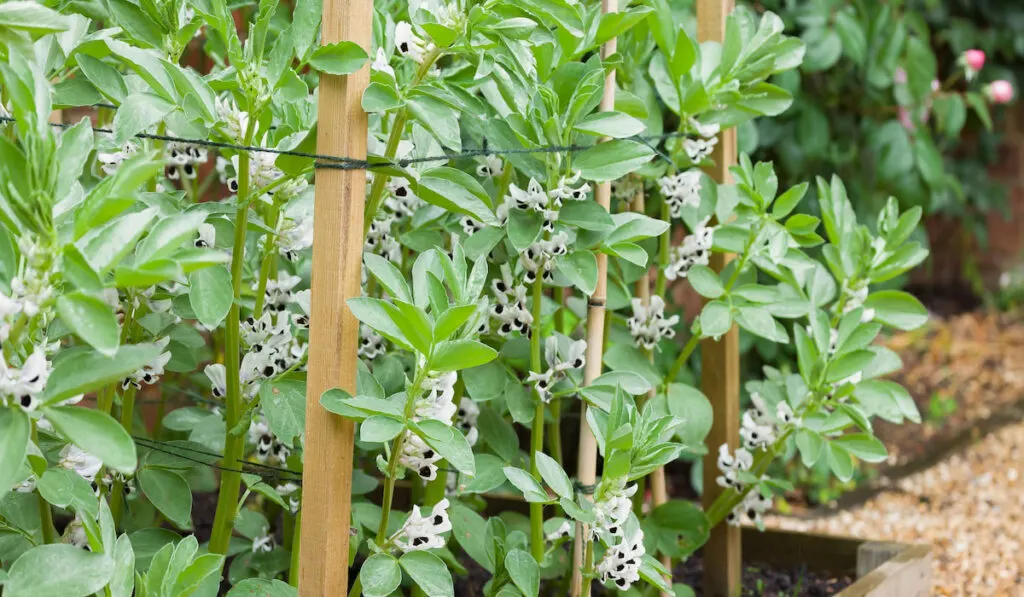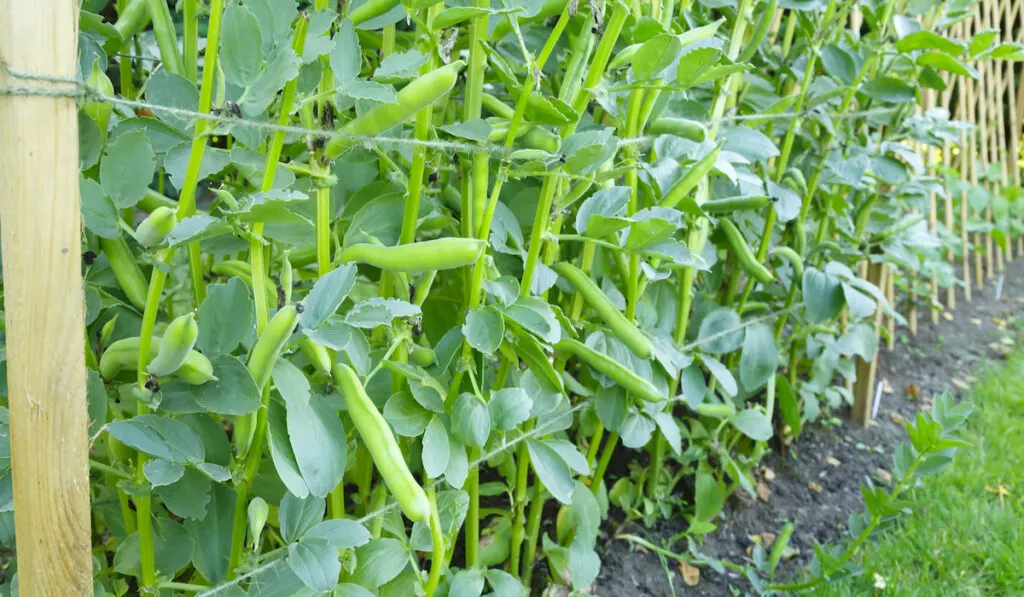Fava beans are a delicacy and are extremely easy to grow, and you can grow them when the growing season of other plants is over.
Aside from growing fava beans for their rich and edible seeds and leaves, you can also grow them as cover crops for your garden.
How can you grow fava beans as a cover crop? Read this article for some tips on planting fava beans as a cover crop.
Table of Contents
Tips for Planting Fava Beans as a Cover Crop
These plants are very easy to grow. Here are useful tips to help you successfully grow them as a cover crop.
1. Soak the Seeds

To speed up the germination and growth of fava beans, you should soak them in clean, unchlorinated water for 12-24 hours.
This soaking process allows water to wake the fava bean embryo in the seed, and it should start growing even before you start sowing the seeds.
2. Plant Them in Early Fall

A great tip is to plant these beans early in the fall.
Planting them early will help them to get a great root structure and even be mature enough to be tilled into the soil in early or mid-winter.
Planting them late will slow growth as the temperature and other factors may not be optimal.
3. Sow the Seeds
When it is time to sow the seeds, sow them 1-2 inches deep in the soil and 4-6 inches apart from each other.
Well, you do not need to worry about the distance between the seeds when you want to use them strictly as cover crops.
4. Pay Attention to Their Growth Requirements

Here are some factors that you should pay close attention to while growing fava beans:
- Temperature: The ideal temperature for the fava beans’ active growth ranges from 60 to 65°F. Well, as cool season crops, you can grow them at 40°F.
- Humidity: You want to make sure that the humidity does not go far below average. Fava beans should grow in 70% humidity or more.
- Light: Even though they can tolerate an environment with low light, you want to grow these beans in a place where they can get full sun. They should get at least six hours of light daily.
- Soil and pH: The soil should be loose and not compacted. It is best that you grow the beans in a raised garden bed. Also, the soil should be slightly acidic (pH 6-6.5).
- Water: So long as you start the beans in the fall, you do not need to water them throughout the growing season. However, if you are interested in their seeds, you may want to water them, especially when the soil becomes dry.
So long as you can pay attention to the needs of your favas, they will grow easily.
5. Do Not Allow Them to Produce Beans Unless You Need Them To

If you want the fava plants to produce beans, let them. This is totally up to you.
However, you should note that if you allow the plants to produce beans, they will have less nitrogen and other nutrients to amend the soil with. These plants will spend a lot of their nutrients, especially nitrogen, to produce the seeds.
If you want to grow fava beans strictly as cover crops, you should cut them immediately after they start to flower. Do not allow them to flower completely because flowering also consumes energy.
But if you want the beans, wait until the plants produce the pods before you cut them. After cutting them, it is time to mix them into the soil.
6. Tilling Them into the Soil
Tilling the plants is easy. All you need is a shovel or spade.
You should mix them with the soil immediately after cutting them so that you can trap as many nutrients as you can. It is best to do this in early or mid-winter so that their nutrients can be used by your plants in early spring.
You want to bury the plants evenly and deep into the soil so that they are covered with at least 2 inches of soil.
Remember to cut them from their roots first before mixing them with the soil so that they do not grow back.
7. Add Extra Fertilizer or Compost

To completely enrich the soil and be certain that the plants will decompose, you want to add compost or any organic fertilizer to the soil.
Compost and organic fertilizer do not just enrich the soil; they also provide some decomposing fungi that can speed up the decomposition of the fava beans.
You do not need to use much as you may need to keep some for spring.
In the next growing season, the soil should be ready for planting as much of the fava beans will have decomposed.
Benefits and Uses of Fava Beans as Cover Crops
Here are many reasons why you should grow fava beans, especially as a cover crop:
1. They Provide Extra Nitrogen to the Soil and Improve the Soil Structure

Fava beans, like other types of beans, are legumes. Legumes or leguminous plants are plants that add nitrogen to the soil with the help of nitrogen-fixing bacteria in their roots.
These bacteria in fava beans help to convert the biologically inert nitrogen compounds in the atmosphere to organic nitrogen that plants can consume.
This is the reason many old-time farmers plant beans with corn, as the beans help to feed the corn.
If you want to get extra nitrogen for the next growing season, plant fava beans as cover crops.
2. Use them to Practice Crop Rotation
Another essential reason to plant cover crops is to practice crop rotation.
If you plant the same type of plants in a garden for a long time, pests and pathogens that attack that plant alone will grow rapidly in the garden.
However, if you plant other types of plants between each growing season, you may reduce the pest population as they are not used to the new plants.
3. They Help to Trap and Release Soil Nutrients

An essential purpose of cover crops is to collect the nutrients in the soil. This may seem weird, but if plants do not collect the nutrients, the rain can wash off the nutrients.
Instead of the nutrients leaching from the soil or getting washed out by the rain, what if you preserve them with your fava bean cover crop?
To get the nutrients back, you only need to mix the plants back into the soil.
4. You Do Not Need to Fertilize Them
Like many other types of cover crops, you do not need to fertilize fava beans.
Even though you may choose to fertilize them, you will not need expensive, nitrogen-rich fertilizer because the plants produce their nitrogen with the help of nitrogen-fixing bacteria.
If you choose to fertilize the fava beans, all you need are products rich in potassium and phosphorus.
This means that fava beans are either cheap or free to grow. Why don’t you give them a try this coming fall?
5. They Make a Great Addition to the Compost Pile

Just in case you have more fava beans than you need, you can add the rest to your compost pile for a rich supply of nitrogen to the pile.
Also, the plants that produced beans are best added to the compost pile so that they can quickly decompose and release every nutrient in them.
With fava beans, there is no room for waste.
As you can see, fava beans are valuable as cover crops for many reasons. Why not give them a try?
Conclusion
Fava beans have many uses in the garden. You wouldn’t want to abandon your raised garden beds in winter. Why not grow fava beans either for their seeds or as cover crops?
